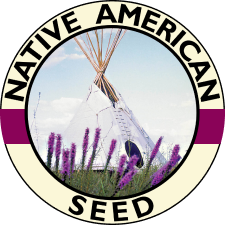What is a native, anyway?
What is a native, anyway?
Try being yourself, the largest mammal remaining on the continent. You might be found on the red earth bank of a river in Oklahoma. The native meadow lay before you with lush prairie grasses making their nutritious seedheads. Sunflowers and gayfeathers are bountiful. As you graze, the daytime heats up into an afternoon thunderstorm.
Bolts of lightening crash down by your side. Being very scared, all your family of brothers and sisters, aunts, uncles, mom, dad and your great grandmother take to the hoof running. All run with you ‘til dark and most end up in Texas around Waco on the Brazos River. Others in the tribe ran a different way and were never to be seen again. Being the kind of day it was and the type of breakfast we had up on the Red River, well the truth of the matter is those seeds just didn’t digest very well. Some were laid out in little piles on the ground by the banks of the Brazos. We didn’t know anything about bagged fertilizer back then, but those Black-Eyed Susan seeds readily sprouted.

You could hear the young sprouts mentioning to the old time residents that they felt at home and looked familiar, as in family. We buffalo spoke among the Black-Eyed Susan sprouts that autumn and then again to the flowers in the spring. The bees and the butterflies were buzzing around mixing up the pollen grains of the new black-eyes with the old black-eyes and all the neighbors got to know each other. And just maybe the slightest little chromosomes were exchanged, thanks to us and the bees. The
newcomers from the Red River contributed a little strength to protect from cold snaps that come along with those blue northers. The Red River black-eye was accustomed to cold weather.
Then, of course, the Waco family of black-eyes gave little secrets to the Red River black-eyes that taught how to live in the heat of a summer drought. That next summer we found ourselves on the Blackland Prairie with dry, cracked open soil. I remember my buffalo cousin stepped in a deep crack in the black clay and broke her ankle. She was born up in northern Kansas and had been separated from her family last year during a wildfire. The move south was too much for her. She never did adapt to the hot summer and sure enough that cracked ground and broken ankle did her in.
As time went the Black-Eyed Susans could be heard saying what a good neighborly exchange had been made. They felt stronger because of joining together as a family. “We could get along for an eternity doing this. Your kids and my kids can sustain for a long time,” they said. The surviving buffalo were all in agreement even though many changes are known to be coming. And that is the way of it.
At this moment it was said: some things will never change, native plants will always belong. Don’t be afraid to make a move to connect.
Seven Story Sequence
Knowing what happened in the past is essential to make meaningful, lasting changes to the future. Read this series in
order. Learn what has occurred over the course of human history that got us to where we are right now. Learn to better understand where we may be going from here.
